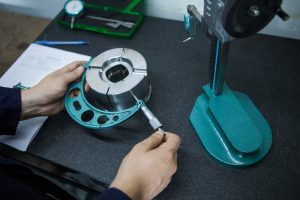Fixing Dimensional Accuracy Issues in CNC Machined Parts

When working with CNC machined parts, achieving dimensional accuracy is really important. It ensures that each component not only fits as it should but works properly in the bigger picture. Imagine trying to build a puzzle, and each piece isn’t precisely cut; it wouldn’t look or function right. Similarly, when CNC machined parts don’t meet the necessary dimensional accuracy, the assembly process may run into a host of problems, leading to inefficiencies and increased costs.
Dimensional accuracy matters for creating quality products, from machinery parts to consumer goods. Small errors can lead to bigger issues, affecting everything from product performance to safety standards. By honing in on dimensional accuracy, companies can ensure their products are reliable and fit for purpose, reducing the risk of faults and enhancing overall satisfaction. Let’s take a closer look at what dimensional accuracy means and the factors that affect it.
Understanding Dimensional Accuracy
Dimensional accuracy in CNC machining refers to how closely machined parts match their design specifications. It’s about ensuring every element is in the right place, down to the smallest detail. Achieving this accuracy is crucial for parts that need to work together seamlessly. Having precise parts means fewer problems in production lines and better performance in the final product.
Several factors can influence how accurate the dimensions of a part end up being:
– Machine Calibration: Precise measurements depend on machines being properly calibrated. If machines are off, even by a little, it can lead to significant discrepancies.
– Material Properties: Different materials respond differently during machining. Some may expand or contract more than others, affecting the final size.
– Machining Environment: Temperature fluctuations and vibrations during the machining process can throw off measurements, leading to inaccuracies.
Understanding these factors helps in addressing the issues before they become major problems. By focusing on precise machining practices, the risk of producing inaccurate parts diminishes significantly.
Common Causes of Dimensional Accuracy Issues
Dimensional accuracy can be influenced by several common challenges, each requiring careful attention to avoid problems. Let’s look at some of these causes and how they impact the final result.
1. Machine Calibration Problems: Machines need to be set just right. If they aren’t calibrated regularly, they can drift away from exact measurements. This leads to parts that don’t match their intended sizes. Regular checks can catch these issues early and keep everything in line with specs.
2. Material Inconsistencies: Not all materials act the same way when they’re being machined. Some might be more prone to changes due to heat or stress. Understanding these characteristics can help adjust processes to get better accuracy.
3. Temperature Variations During Machining: The environment plays a big role. If a workshop gets too hot or cold, the materials and machines might react in unexpected ways. These changes can throw off dimensions and create parts that aren’t accurate.
By keeping an eye on these factors and addressing them through proactive measures, businesses can improve the accuracy of their CNC machined parts. Balancing machine settings, choosing the right materials, and managing the machining environment helps in achieving much more reliable measurements. This, in turn, makes sure that all parts fit together smoothly, reducing complications and boosting efficiency.
Methods to Fix Dimensional Accuracy Issues
Fixing dimensional inaccuracies requires some thoughtful approaches. Tackling these issues not only improves the quality of the final products but also makes the manufacturing process smoother. Here’s how you can address such problems effectively.
– Regular Machine Maintenance: Just like a car needs regular servicing to run smoothly, CNC machines require ongoing maintenance. Scheduling periodic checks ensures the equipment performs at its best and helps you spot potential errors before they affect your work. Calibrating machines frequently and replacing worn-out parts keeps the process accurate.
– Proper Material Selection: Choosing the right material can make all the difference. Different materials react differently to machining. For instance, plastics might expand or shrink based on temperature. By understanding the properties of each material and selecting the most suitable ones for your project, you reduce the risk of dimensional errors.
– Implementing Effective Cooling Systems: The machining process generates heat, which can cause materials to expand or contract unexpectedly. Using efficient cooling systems helps manage this temperature fluctuation, ensuring the dimensions remain stable. An effective cooling mechanism minimizes heat effects and keeps your parts accurate.
– Utilizing Advanced CNC Software: Modern CNC software might be more than just a tool—it’s a boon. Advanced software not only assists with designing complex parts but also simulates processes to predict and correct errors before they occur. By leveraging these technologies, you ensure precision right from the beginning.
Role of Assembly Services in Enhancing Dimensional Accuracy
Incorporating assembly services into the manufacturing process plays a big part in maintaining precision. Precision goes beyond individual parts; it’s about how everything fits together. That’s where careful assembly steps in.
– Importance of Precise Assembly: When each piece is closely examined and put together with care, the chances of errors shrink. Precise assembly ensures that every component aligns perfectly, leading to a product that functions as envisioned.
– Ensuring Better Fitting Parts: Assembly services bring an additional layer of quality control. Skilled professionals look at how parts interact, guaranteeing not just individual accuracy but collective harmony too. They make sure every bolt, screw, or joint holds tight, eliminating potential misalignments.
– Examples of Assembly Services: Consider how a bike chain works. If each link is precisely connected, the whole chain moves smoothly without a hitch. Similarly, precise assembly in a manufacturing setting ensures a seamless operation. Well-assembled components improve integrity and reliability, essential for high-stakes applications.
Ensuring Precision in Machining with Strategic Dimensional Accuracy
Finding the right mix of strategies to address dimensional inaccuracies truly transforms the machining landscape. Focusing on regular maintenance, smart material choices, temperature control, and cutting-edge software creates a solid foundation. Assembling parts with attention reinforces precision and provides a polished result.
In the end, fixing dimensional accuracy issues involves a mix of good practices and the right tools. Every step must aim at creating reliable, high-quality products. With careful assembly and consistent quality checks, maintaining dimensional accuracy becomes less of a challenge and more of a routine success.
Improve the dimensional accuracy of your parts with the right approach. Precision matters not just in machining but in how parts come together. At Canus Plastics Inc., our assembly services ensure that each piece fits perfectly, maintaining the integrity and functionality of your products. Explore how our expertise can streamline your manufacturing process and deliver results you can rely on.

